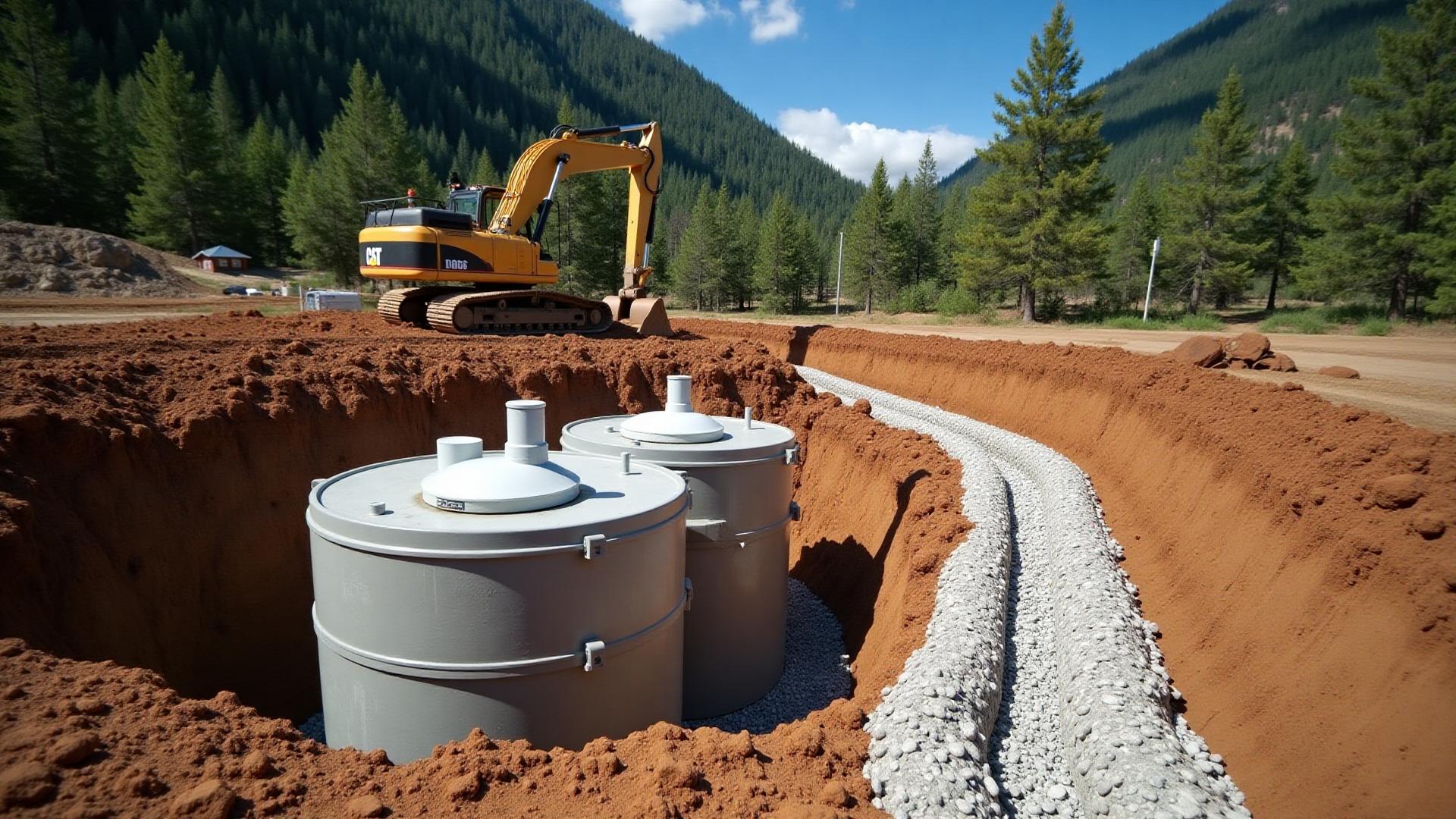
Septic System Installation
Septic system installation is a cornerstone service for rural properties across Spokane County, Pend Oreille County, Kootenai County, and Bonner County—transforming raw land into livable, permitted homesites. Tacoma Creek Build Co. delivers complete septic installations from soil testing and system design through excavation, component installation, and final health department inspection. Whether you're building a new home in Sandpoint, replacing a failing system in Newport, or developing a subdivision near Coeur d'Alene, we handle every step with precision, coordination, and attention to code—ensuring your system is sized correctly, installed to spec, and approved the first time.
Mountain properties demand specialized septic solutions: steep slopes may require pressure distribution or mound systems, rocky ground needs careful excavation, and seasonal water tables affect drainfield placement. We've installed gravity systems, pressure dosed laterals, sand filters, and advanced treatment units across the Inland Northwest, always matching the system to site conditions and local health department requirements. When you need coordinated land clearing and site prep before septic installation, we provide turnkey service from first tree to final compaction.
What's Included
Ready to Get Started?
Contact us today for a free consultation and site evaluation. We'll provide a detailed quote and timeline for your project.
Why Choose Tacoma Creek Build Co.
| Feature | DIY / Others | Tacoma Creek Build Co. |
|---|---|---|
| Licensed & Insured | ❌ | ✅ |
| GPS Machine Control | ❌ | ✅ |
| Compaction Testing | ❌ | ✅ |
| Permit Coordination | Limited | ✅ Full Service |
| Mountain Terrain Experience | ❌ | ✅ 10+ Years |
| One-Call Warranty Service | ❌ | ✅ |
Our Process
Step 1: Site Assessment & Soil Testing – A licensed septic designer or health department official conducts a percolation (perc) test to measure how quickly soil absorbs water. Soil profiles are dug to evaluate texture, depth to restrictive layers (rock, clay, water table), and seasonal high water. This data determines which system types are feasible and where the drainfield can be located.
Step 2: System Design & Engineering – Based on soil test results, household size (bedroom count), and site constraints (setbacks, slopes, wells, property lines), we design a septic system that meets health department requirements. Options include gravity (most economical), pressure distribution (better for marginal soils), mound systems (for high water tables), or advanced treatment (for sensitive areas). The design is submitted to the local health department for review and approval.
Step 3: Permit Application & Approval – We prepare and submit permit applications, pay fees, and coordinate with health department staff to secure septic installation permits. Turnaround is typically 2–6 weeks depending on jurisdiction and application completeness. We handle all follow-up, resubmissions, and clarifications to keep the process moving.
Step 4: Excavation & Installation – With permits in hand, we excavate the tank hole and drainfield trenches to design depth and dimensions. Septic tanks are set on compacted gravel pads with proper inlet/outlet elevations. Drainfield laterals are installed in washed rock trenches with geotextile fabric to prevent soil migration. Pumps, alarms, and controls are installed and wired per code. All work is coordinated with licensed plumbers and electricians as required.
Step 5: Inspection, Backfill & Startup – The health department inspects the installation before backfilling to verify tank placement, lateral spacing, elevations, and component quality. Once approved, we carefully backfill with clean fill (no large rocks near tanks or pipes), compact in lifts, and restore final grade. The system is filled, pumps are tested, and we provide the homeowner with startup instructions and maintenance guidelines.
Why Clients Choose Us
Years Experience
Projects Completed
Client Satisfaction
Frequently Asked Questions
Let's Build Something Great Together
From initial site walk to final inspection, Tacoma Creek Build Co. delivers professional dirt work you can build on.